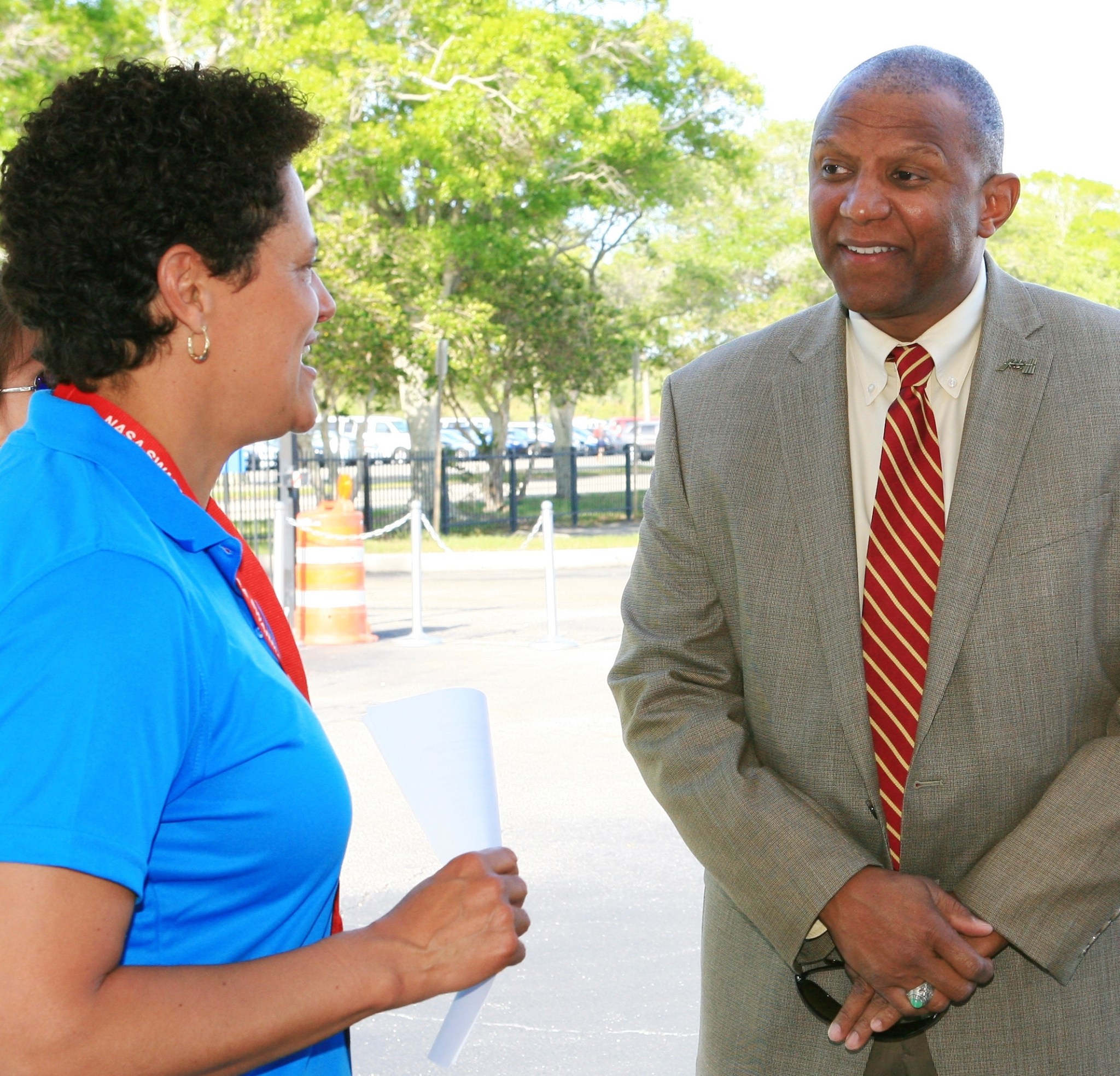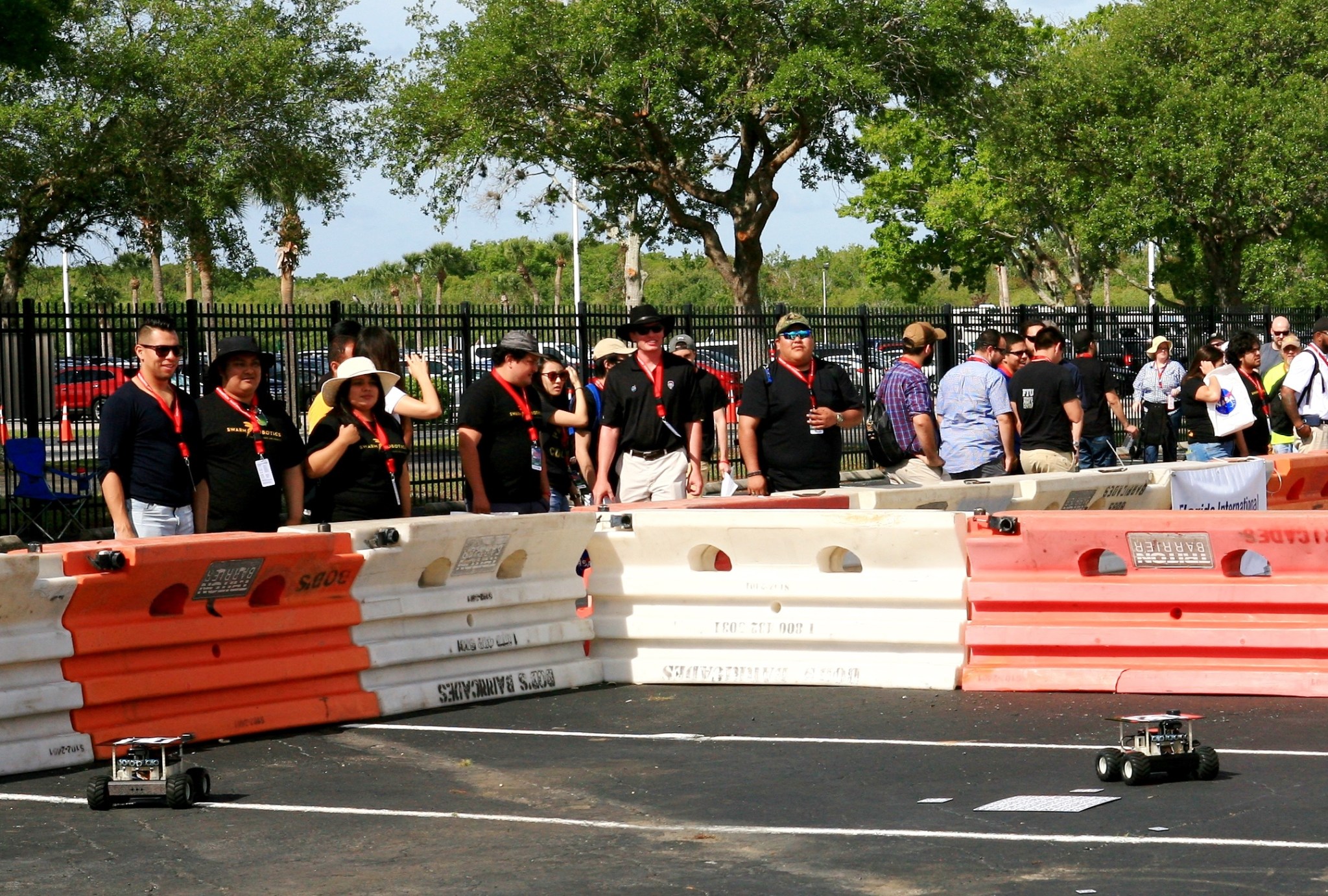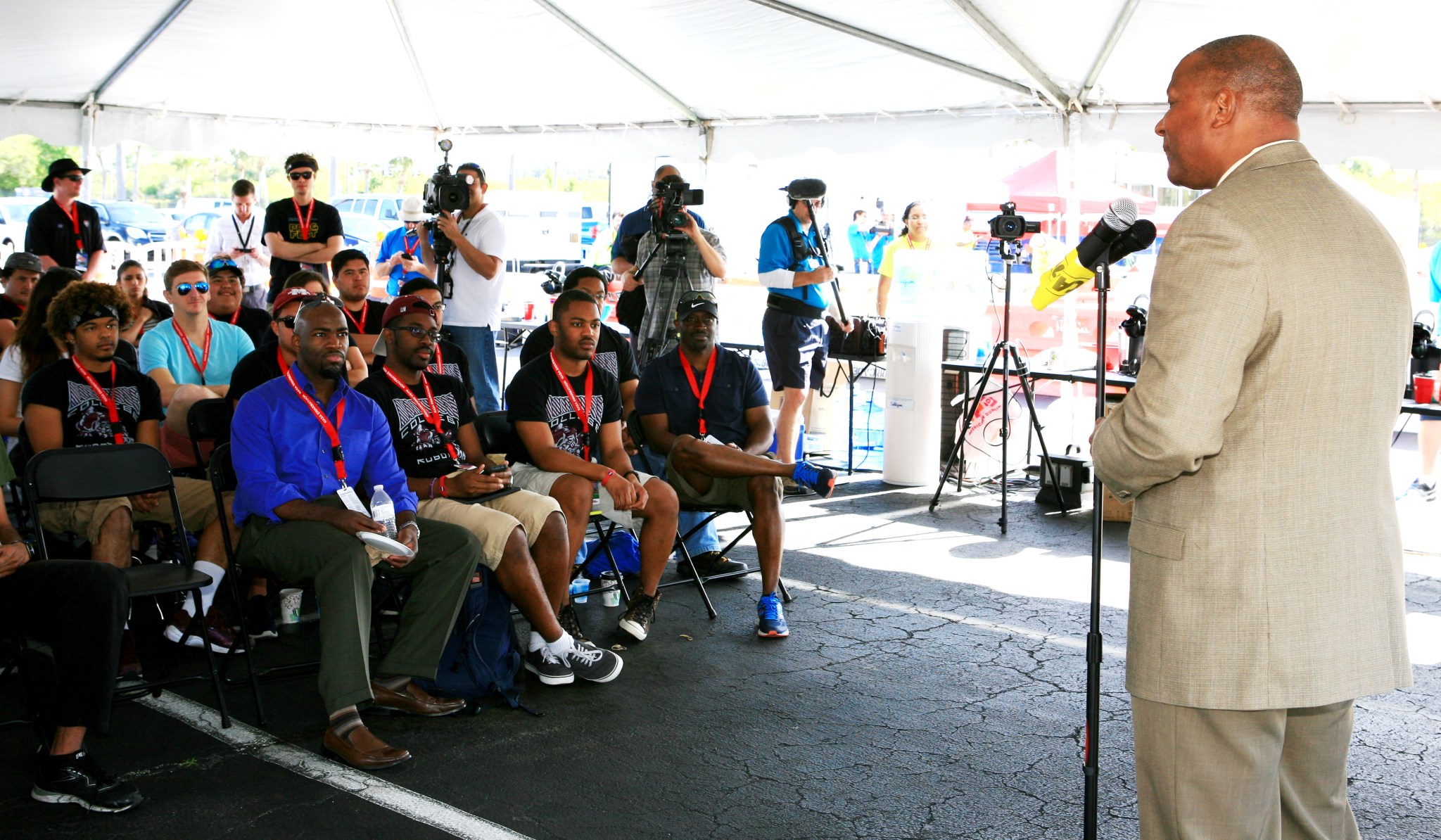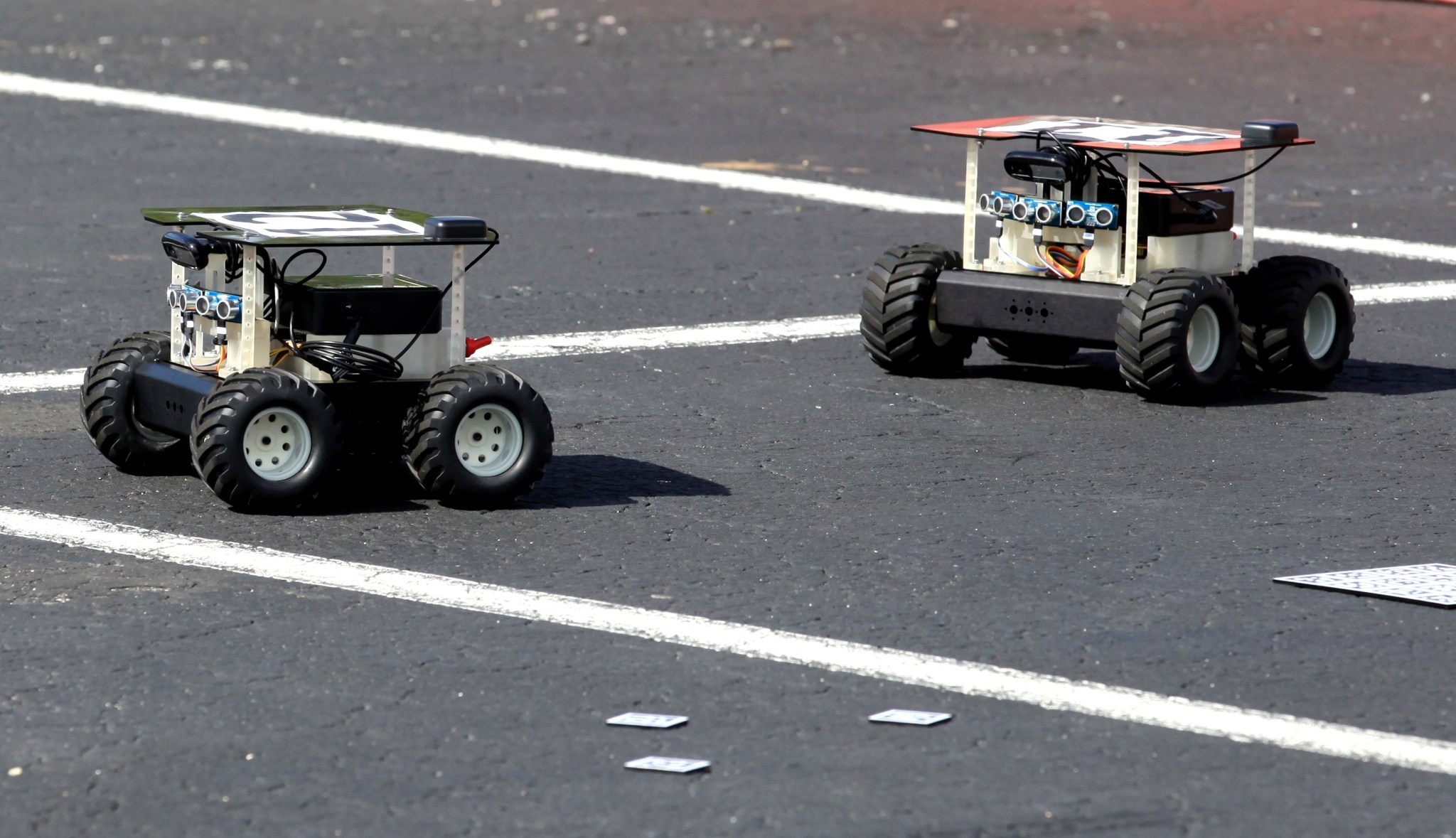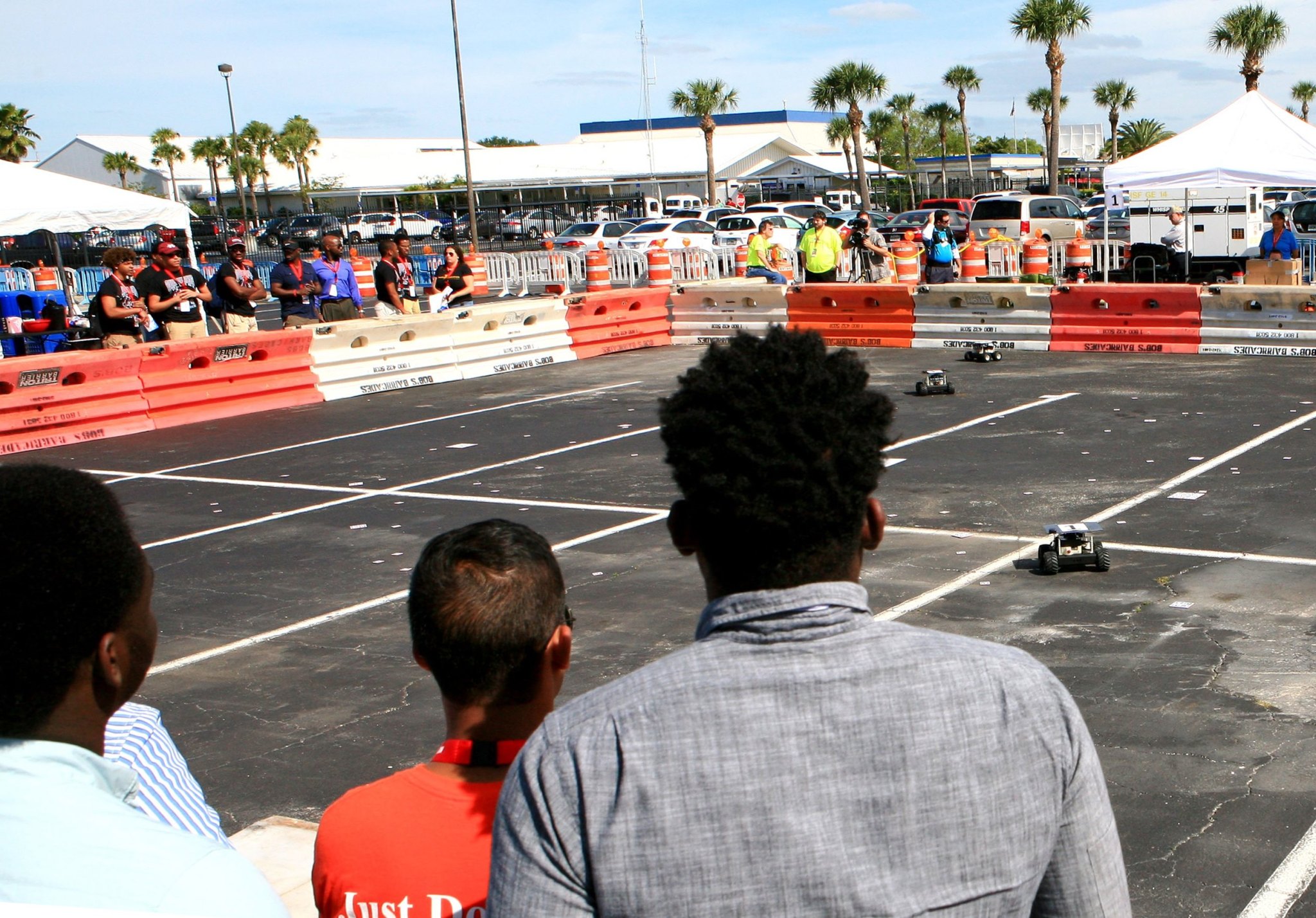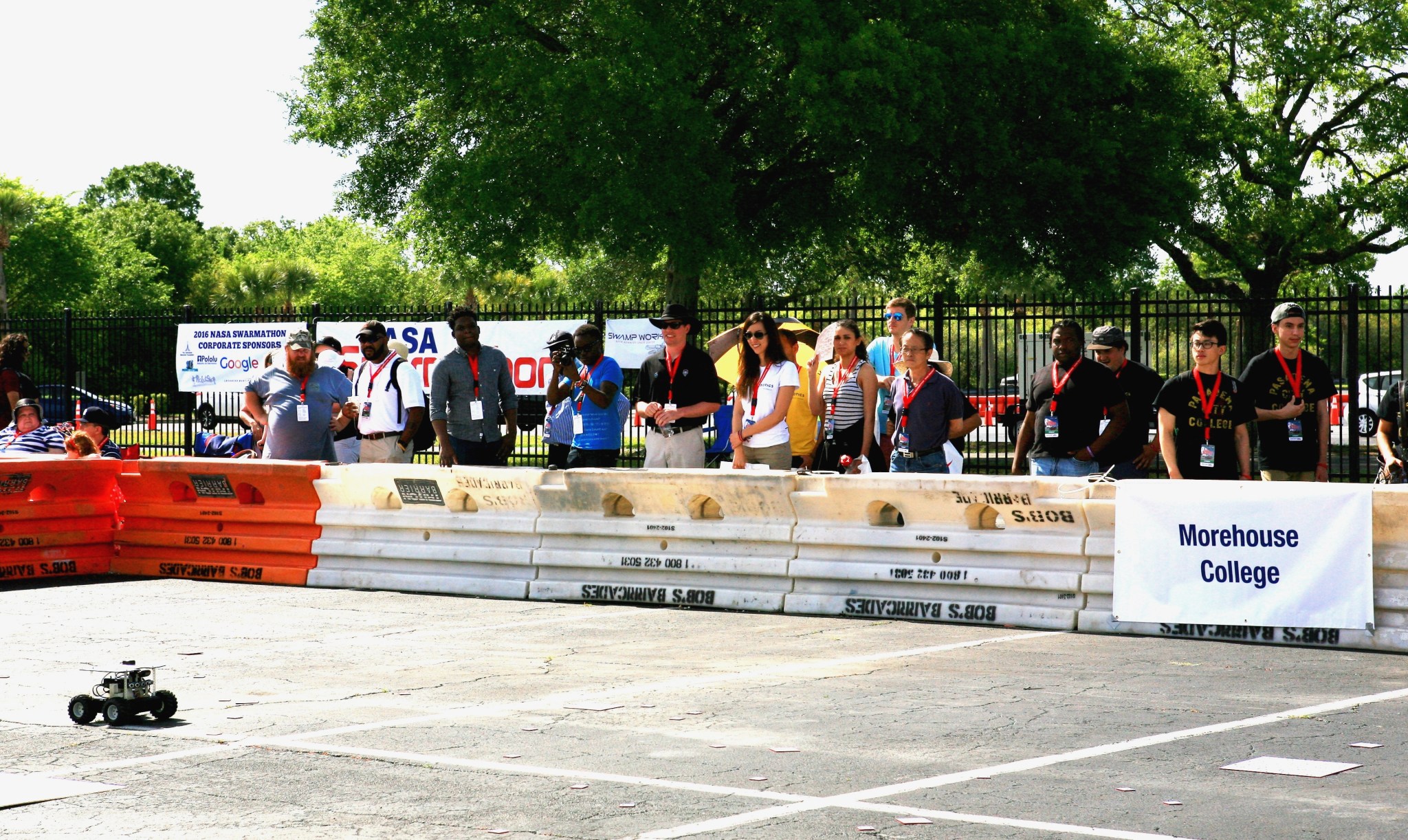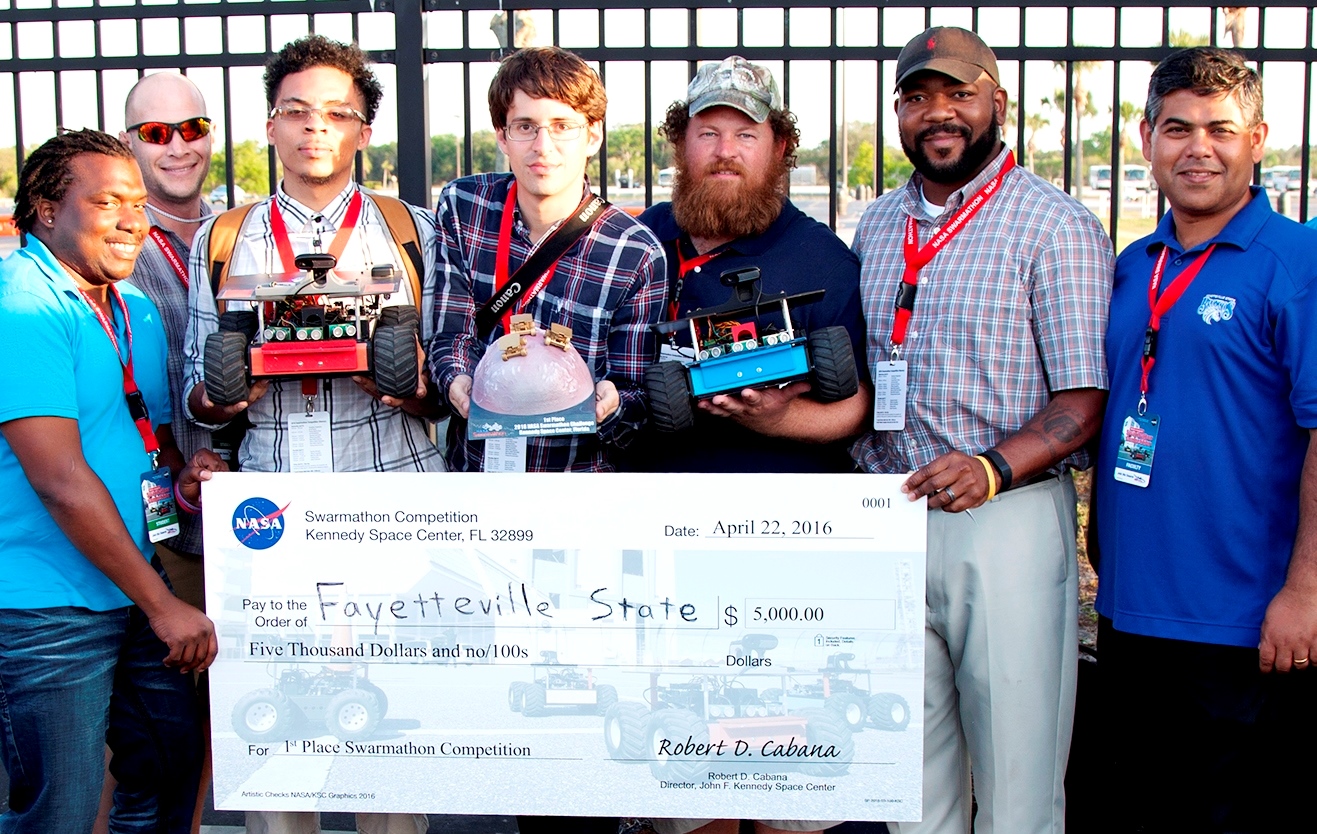By Bob Granath
NASA’s Kennedy Space Center, Florida
For NASA’s Journey to Mars, researchers at the agency’s Kennedy Space Center in Florida are developing small robots known as “Swarmies” to help find resources once astronauts arrive at the Red Planet.
The Swarmies were designed through a collaboration between the University of New Mexico and Kennedy’s Swamp Works facility. In research already taking place at the Florida spaceport, computer scientists are developing “Swarmies” focusing not so much on the hardware, but the software. What makes the small robots noteworthy is the coding each carries in its silicon brain that makes them search for useful resources the same way ants do.
In the spaceport’s first annual Swarmathon, students from 12 colleges and universities across the nation were invited to develop software code to operate these innovative robots. The event took place April 20-21, 2016, at the Kennedy visitor complex.
The development of this new form of robotics is another example of transformative capabilities and cutting-edge technologies being developed and tested by the agency today.
This year’s inaugural Swarmathon was won by a team from Fayetteville State University in Fayetteville, North Carolina.
For students participating in the Swarmathon, their work is designed to improve their skills in robotics and computer science, as well as integrating hardware and software. Their developments are helping NASA refine technology for future human space exploration.
In his welcoming remarks, Kennedy’s associate director, Kelvin Manning, pointed out to the students that their endeavors to develop robotic code is more than an academic exercise.
“You will be helping NASA advance our exploration mission,” he said, “One day you may work here too.”
Manning encouraged the students to take advantage of opportunities to speak to NASA engineers and professionals.
“Ask questions,” he said. “That’s what we’re here for – to help you be successful.”
The Swarmathon is part of NASA’s continuing efforts to encourage students to improve science, technology, engineering and mathematics, or STEM, teaching and learning in the United States. It is a joint effort between the University of New Mexico and the space center’s Minority University Research and Education Project (MUREP) STEM Engagement.
The goals of this MUREP program are to increase the number of NASA-focused STEM experiences that engage underrepresented groups in active education and to disseminate innovative practices and programs in STEM teaching and learning. Additional objectives include increasing the number of undergraduate and graduate degrees in NASA-related fields awarded to students from minority-serving institutions.
Theresa Martinez, MUREP STEM Engagement manager in Kennedy’s Education Projects and Youth Engagement Office, believes the effort will provide valuable experience for young researchers and help NASA develop crucial technology for planetary exploration.
“The Swamathon is designed to challenge students to refine their software coding abilities and develop new algorithms,” she said. “As someone who works in NASA Education and has an engineering degree, I definitely believe this is a win-win for both NASA and the students.”
Algorithms are self-contained, step-by-step operations to perform calculation, data processing and automated reasoning.
In the Swamathon, students were asked to develop computer code for the small robots, programming them to look for “resources” in the form of barcodes.
The principal investigator for the event is Melanie Moses, Ph. D., an associate professor of computer science at the University of New Mexico.
“Our lab has worked for a number of years understanding algorithms that nature uses to solve problems,” Moses said. “For example, we studied ant colonies and how ants communicate to develop an emerging swarm. We apply what we learn in biologically inspired computation to swarm robotics.”
Moses is helping young engineers focus on the advancement of computer systems.
“Students are learning not just how to program and manage a large software project, but also how to write code that works in the real world,” she said. “They also are learning that teamwork, creativity and ingenuity often is way more important than what you learn in class.”
The Swarmathon competition provides students an opportunity to put their research to the test.
“Each student team attempted a new algorithm,” Moses said. “Some are taking algorithms that others have suggested and testing them in the real world. Many students have come up with clever tricks and elegant, simple solutions that can be implemented on these fairly rudimentary robots.”
Building on the research conducted at the University of New Mexico, the engineers at Kennedy have been developing programs that tell small, wheeled Swarmie robots to go out in different directions to search an area for useful materials. In the future, finding resources available at a planetary landing site may help astronauts practice in-situ resource utilization (ISRU), that is, harvesting and relying on available raw materials as they explore deep-space destinations.
Moses believes the student project could lead to mastering this innovative technology.
“The Swamathon will harness student creativity to solve difficult and complex problems,” she said. “This is an incredible opportunity for students to develop technologies to explore our world and beyond.”
For the competition, selected teams were provided three Swarmie robots, training and instruction, and the opportunity to compete against other teams for a $5,000 cash prize.
The task assigned to the teams from the colleges and universities represented fits right in with what NASA scientists are already doing.
In the Swarmathon competition, teams developed search algorithms for the small robots to operate autonomously. Swarmies were programmed to communicate and interact as a collective swarm, similar to ants foraging for food. During the competition, the teams’ algorithms operated the Swarmie robots in an official competition arena. Groups were ranked by the number of resources their search algorithm located in a specified period of time.
In the preliminary round, three robots searched an approximate 15-by-15-meter walled arena for up to 256 resources over a period of 30 minutes. During the final rounds, six robots searched an approximate 22-by-22-meter walled arena for a maximum of 256 resources during one hour.
The level of difficulty was based on the fact that during the competition teams were not allowed to communicate with their robots. All robot actions were required to be preprogramed and autonomous.
As a follow-up to the Swarmathon, a Research Exchange for Undergraduates Program has matched students from Swarmathon teams with faculty mentors from other Swarmathon teams for an eight-week summer research project.
After faculty mentors propose a Swarmathon-related research project, students indicate what kind of projects they are interested in and what kind of skills they have to contribute. The Swarmathon evaluation team will choose five students and pair them with five faculty mentors.
The challenges of NASA’s exploration vision will require an extended human presence on lunar and planetary surfaces. Using available in-situ resources will benefit both robotic and human missions.
Throughout history, pioneers had to live off the land when exploring new territories. NASA engineers and scientists now are developing capabilities needed to find resources once astronauts reach destinations such as an asteroid, the moon or Mars.
Eventually, robot swarms developed by today’s students could be used on other planets, as well as on Earth, for resource use and exploration.
As NASA expands human presence in the solar system, such as the Journey to Mars, the goal of the Swarmathon competition is to develop integrated robotic platforms that could revolutionize space exploration through the utilization of extra-planetary resources.





























